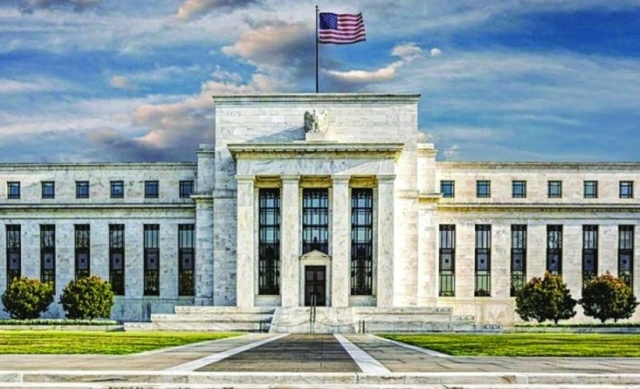Summary
Markets anticipate the FED’s interest rate announcement, which will announce intentions to raise interest rates in response to growing inflation. The Fed’s interest rate decision will be revealed on March 16 at 22:00 p.m. ET. At its monetary policy meeting, the Fed is projected to raise the overnight benchmark rate by a quarter point.
While Russia’s invasion of Ukraine and Western countries’ severe sanctions heightened global economic uncertainty, markets’ attention was focused on the Fed’s interest rate announcement. While the Ukraine crisis heightened economic uncertainty, Fed Chairman Powell said that interest rates will be raised in March.
WHEN DOES THE FED MEET?
The Fed will meet on March 15-16 to set interest rates. The Fed’s interest rate decision is slated to be revealed on March 16 at 21:00 ET.
ON MARCH 16, A QUARTER POINT INCREASE IS EXPECTED.
At its March 16 monetary policy meeting, the Fed is likely to raise the overnight benchmark rate by a quarter point.
Fed Chairman Jerome Powell, weighing the high inflation in the United States against the new risks posed by the Ukraine war, stated that the Fed will begin raising interest rates “carefully” at its March meeting, but will be prepared to take more aggressive steps if inflation does not fall within the expected time frame. had said (REUTERS)
FED PRESIDENT POWELL’S MESSAGE
Powell stated that a rate rise in March was acceptable, but the Ukraine-Russia situation has cast doubt on the economy’s prospects.
Powell indicated in his testimony to the Financial Services Committee of the United States House of Representatives that the labour market is solid, but inflation is considerably over the objective.
On March 16, the Fed will announce its interest rate decision.
Prior to the Ukraine crisis, the market expected the Fed to raise interest rates by 50 basis points, but with the war, expectations about interest policy began to shift.
In January, consumer inflation in the United States reached 7.5 percent, the highest level in 40 years. The federal funding rate set by the Fed is in the 0-0.25 percent range.
WHAT HAPPENS IF THE FEDERAL RESERVE RAISES?
A probable interest rate rise by the Fed will have a significant impact on global markets, particularly developing economies. It is expected that the Fed’s rate hike will enhance the value of the currency and hinder GDP. As a result, the markets closely monitor the Fed’s moves.
WHEN WILL THE FED MAKE A DECISION TO INCREASE INTERESTS?
Goldman Sachs economists anticipate that the US Federal Reserve (Fed) will hike interest rates four times in 2022, in March, June, September, and December.
According to the Bank’s chief economist Jan Hatzius’ research report, the improvement in the US job market and hawkish indications in the minutes of the Fed meeting held on December 14-15 lead to a speedier normalisation.
Hatzius indicated in his research note that they have moved the prediction for balance sheet reduction from December to July, and that inflation would most certainly continue substantially over the goal. “We added December to the rate increases we foresee in March, June, and September,” Hatzius explained.
DECISION ON INTEREST CAN BE INCREASED BY 50 BASE POINTS
Markets have been rattled since the US CPI data, which came in considerably above forecasts, fueled speculation that the Fed will hike interest rates by exactly 50 basis points in March.
In her speech yesterday, San Francisco Fed President Mary Daly stated that there is no need for a half-point hike in interest rates, and that too “sudden and forceful” monetary policy steps may backfire.
Interest rate disclosures sent US Treasury bond yields to their highest levels since 2019. Bond rates fell on Friday as global concerns heightened demand for safe-haven investments.
‘INTEREST IN ALL MEETINGS INCREASES’
“We now anticipate the Fed to raise the policy rate by 25 basis points at each of the following nine meetings,” analysts led by JP Morgan Chief Economist Bruce Kasman said. According to JP Morgan, the Fed will hike interest rates four times this year, in March, June, September, and December.
According to economists, US inflation in January was a “upward surprise,” and “we do not see a decrease from the record rate of the previous quarter.”
WALL STREET FORECASTS ARE INCREASING.
JP Morgan economists so agreed with their Wall Street peers’ projections. Goldman Sachs earlier increased its forecast for the number of rate increases from 5 to 7. Morgan Stanley predicts six rate increases.
Along with these changes, Fed officials’ hawkish messages have persisted. Speaking at a conference in New York on Friday, Chicago Fed President Charles Evans stated that the United States is experiencing the greatest inflation in 40 years and that “the fundamentals of the present posture of monetary policy are incorrect, and significant revisions are required.”
When and where will the Fed’s rate-setting meeting take place? FED interest rate decision in March 2022!
